TX noise performance of modern HF transcievers
1. Introduction
There has been a lot of confusion about TX noise performance of
modern HF transcievers after ARRL changed the way how they measure TX
composite noise. Recent plots only show TX phase noise performance.
Although one can design TX chain where LO phase noise is the main
contributor to the composite TX noise (the optimal design), most, if
not all, amateur HF transcievers do not fall in this category. In
most cases the amplitude noise, coming from various sources, is the
main contributor to the TX noise actually transmitted through antenna.
Measuring TX phase noise, where the test method removes amplitude
noise, does not give the right picture for nowadays very important HF
transciever metric - how clean is the TX signal.
When choosing new transciever, many are still distracted by the RX
performance ranking tables, where the RIG with higher rank is percieved
as being better - which relly is missleading as the differences might
only be a dB or so on the performance metric that is hard to repeatably
measure with 1dB accuracy. It is time to get out of the RX performance woods and
present full picture of the HF RIGs. Kudos to ARRL and other
independent reviewers for publishing complete test data.
2. TX noise measurement campagin
TK0C contesting concept
relies on multiple in-band stations being able to operate without
interference. Two most important HF RIG characteristics are RX blocking
dynamic range and TX noise spectrum versus offset from the TX carrier
frequency. We have been using TS-590S(G) for most of the time as it was
the best price-performance radio for this task. With the introduction
of TS890 and FTDX101, it appeared (based on the ARRL test results) that
these radios might be even better. Therefore we set for a measurement
campaign @S57AL in December 2019. List of attendies and providers of
various HF RIGs: S57AL, S51RM, S50K, S53MM, S53RM, S53WW, S53ZO, S55OO,
S57C, S57K, S57L, S57NAW.
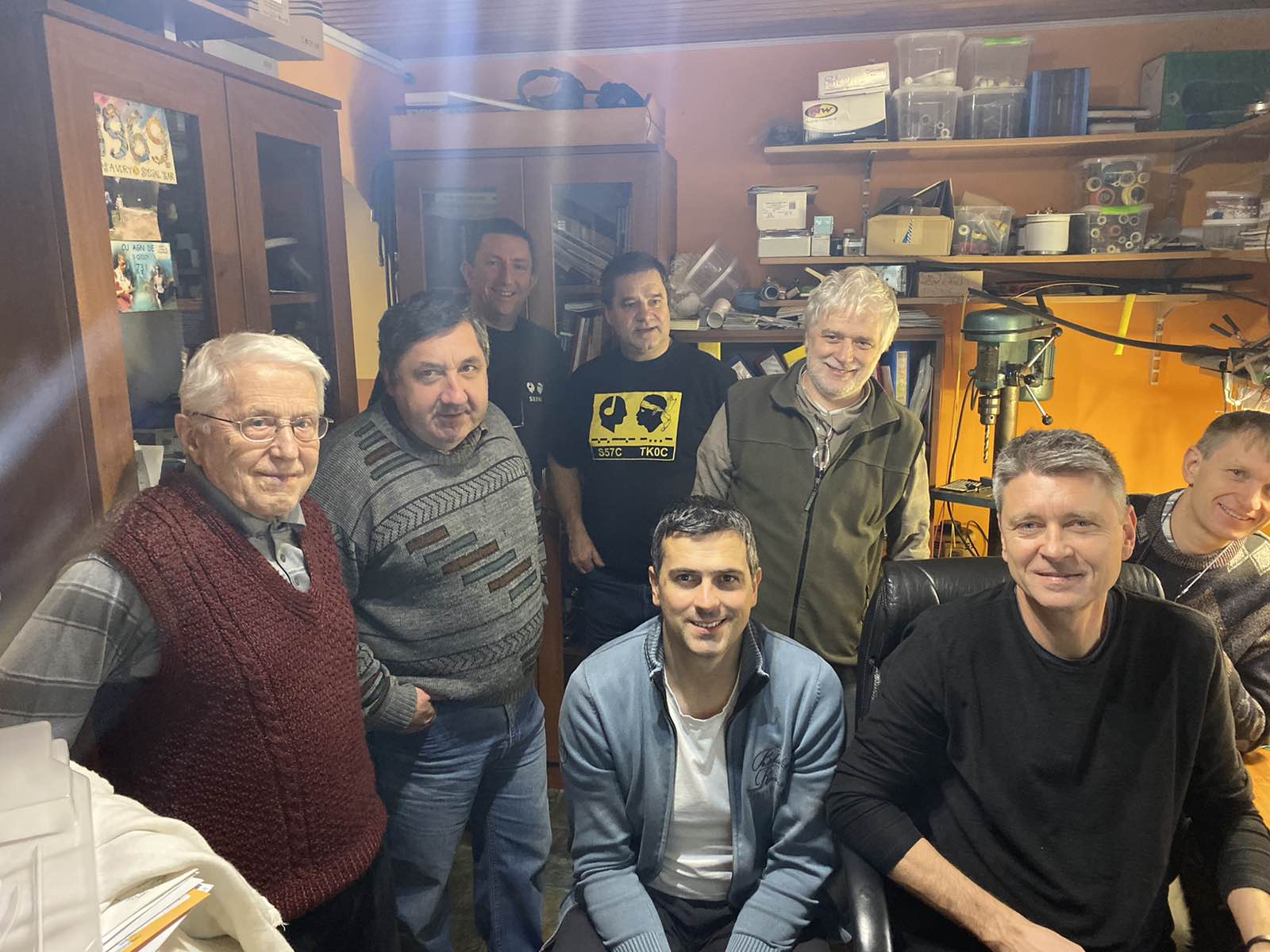
Group photo (from left to right: 1rm, 7naw, 7al, 7c, 3mm, 3rm, 3ww, 0k).
3. Test method
I
used QS1R as a measurement receiver with 14.313 kHz crystal notch
filter (tnx to Franci/s51rm) and 100W attenuator set to optimize
measurement dynamic range. Afterwards I saw that QS1R dynamic range
would be OK to accurately measure composite TX noise of all RIGs we had
on the table except for the K3, SunSDR and KX3.
For reference, here is the QS1r phase noise: -139dBc/Hz@1kHz, -146dBc/Hz@10kHz,
-148dBc/Hz@20kHz, -149dBc/Hz@50kHz. With XTAL notch filter the
measurements were done 30 dB above the QS1r noise floor.

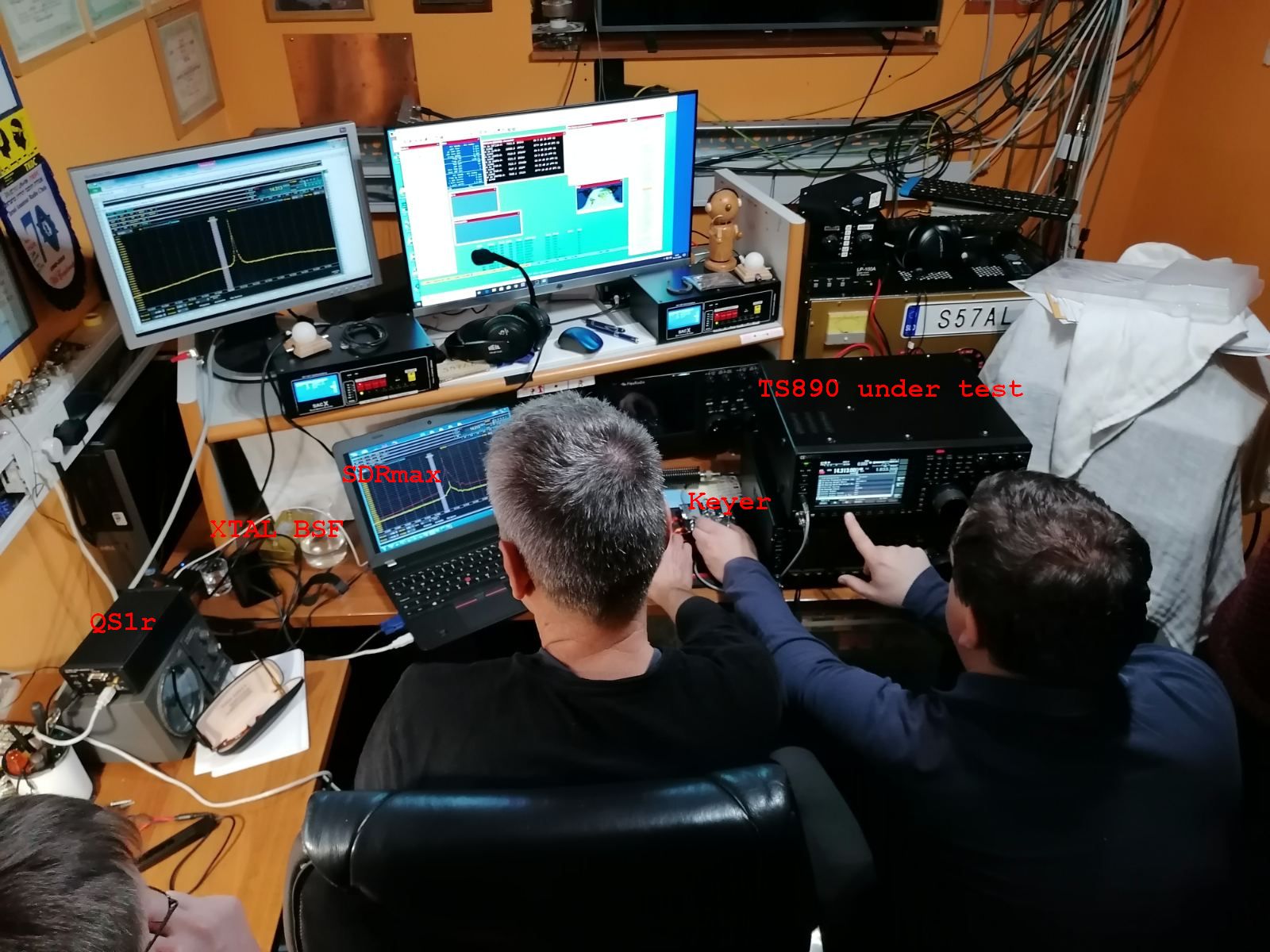
4. List of tested gear
TS590sg
|

|
TS590s - 2pcs
|
TS890 - 2pcs
|
| FTdx101D |
| FLEX6600 |
| FT1000mp |
FT2000 - 2pcs
|
| FLEX1500 |
| IC7600 |
| IC7610 |
| IC7300 |
| K3 |
| KX3 |
| SUNSDR |
5. Test results
I set for 3 different TX tests:
- TX composite noise (CW tone at 100W, 50W and 10W)
- Keying cliks
- SSB splatter using pink noise generator with 6:1 peak-to-average ratio
TX two tone IMD testing is (maybe) fine for characterising single
stage processing blocks (amplifiers, mixers, ...), but in today's time
nonlinear performance characterizing should be tailored to the
intended purpose of the DUT. Hamradio transcievers for contesting only
use two modes, CW and SSB. In CW, relevant TX measure is CW keying
clicks (two-tone IMD metric is close to useless for predicting how bad
the CW signal might be). In SSB, the nonlinear distortion when TX is
driven with the voice (splatter) is really of interest and it has
underlying relationship to two-tone IMD distortion. Consult fine
articles from SM5BSZ for further insight into the TX performance metric.
5.1 TX composite noise
Results are presented for 50W output power as this is the most common
PA drive level. TX composite noise at 100W is theoretically 3dB lower
and some radios are close to that value, but some are quite different
(TS590s shows almost no difference between the 100W and 50W, while
IC7610 shows 7dB).
In the first plot I am presenting comparison of 5 radios to show the
evolution of this very important TX parameter with FT1000mp
representing an old technology, K3 being the best (although also very old - specimen was SN #26) and then the two
flagship radios from Yaesu (FTDX101d) and Kenwood (TS890). And of
course the TK0C working horse (TS590s).
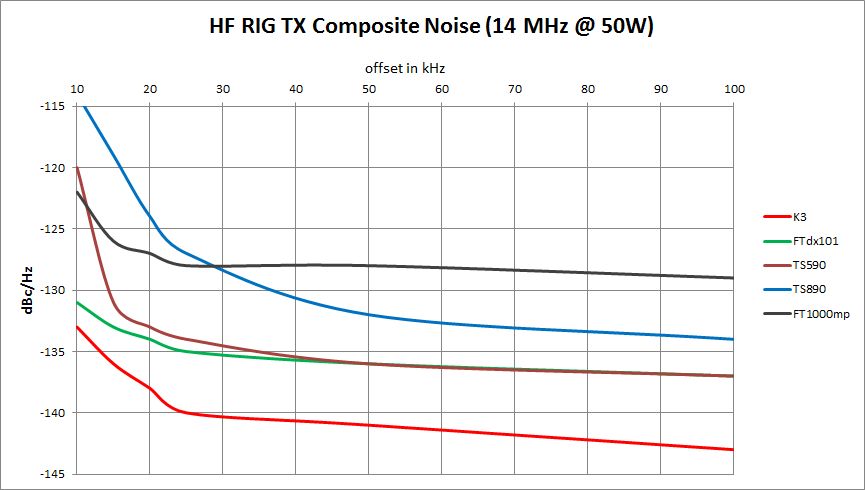
The bigest surprise was the TS890 TX composite noise - not sure how
Kenwood managed to make it worse than TS590. The FTDX101d is very good
but only beats TS590 at offsets less than 15 kHz (still an important
part of the band when playing in-band). And both are more than 10dB
behind K3.
The ARRL test data for TS890 would suggest this radio has superb
transmitter and FTDX101d should even beat K3 at few kHz offset - unfortunately this is
not so.
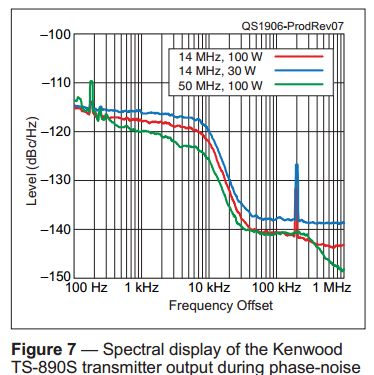
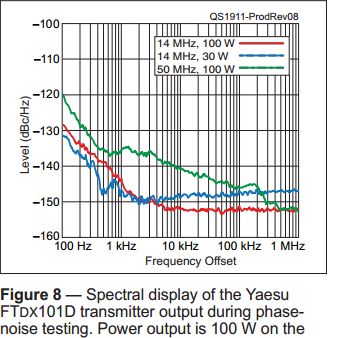
Combined plot of all tested radios shows that KX3 and SunSDR @15W are even better than K3 @50W.
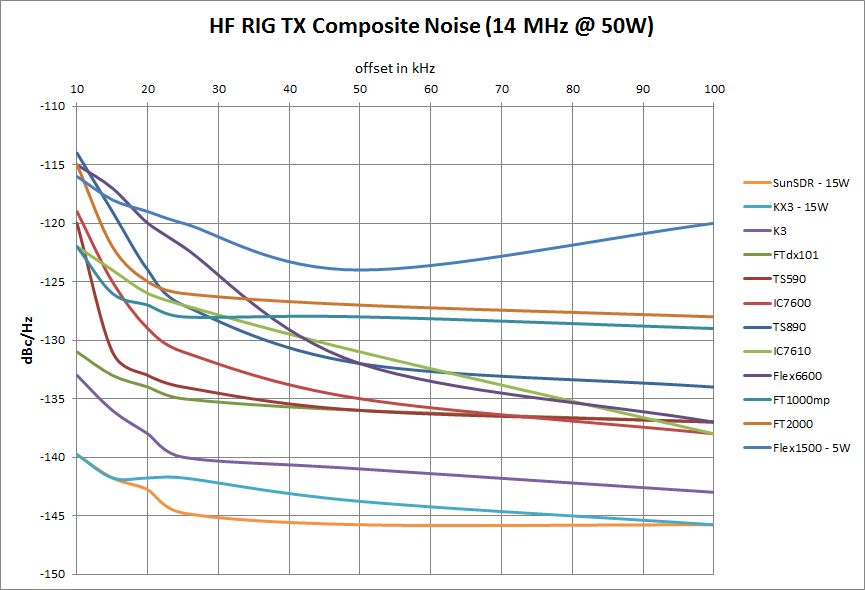
The spectrum below is an example how TX noise measurement looks like
when using narrow notch filter. Plot shows comparison between TS590s
(red) and FTDX101d (yellow) - 10 kHz per division. In the middle of the
notch residual carrier is seen. TS590s has a 15dB noise pedestal +/-15
kHz around the carrier (always clearly heard during TK0C operation).
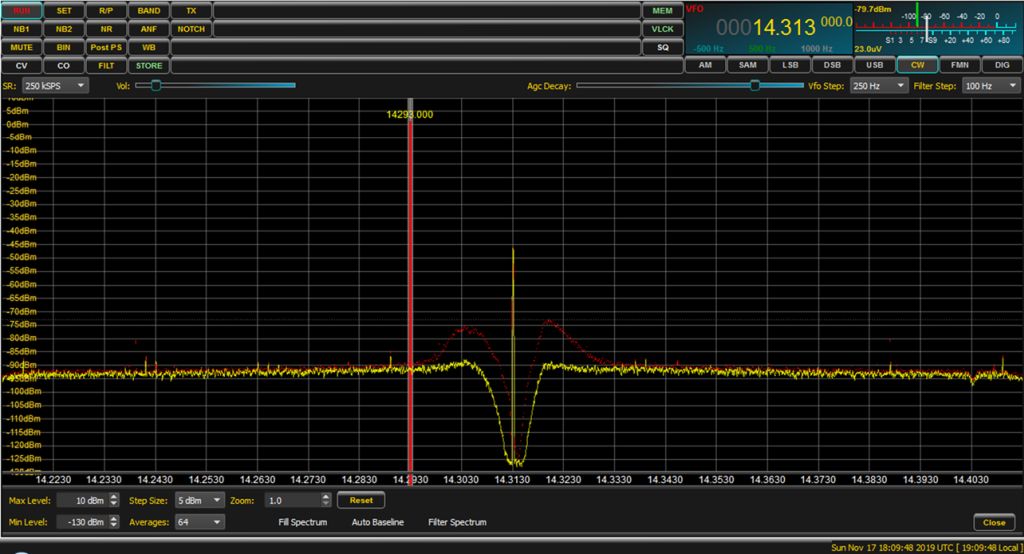
For those of you that love a lot of data, here is the complete table
also showing TX noise at 500kHz offsett which is of importance when
using HF RIG as a base station for VHF/UHF transverter. Table also
shows RX NF and blocking DR to help select the right radio for in-band
operation (you need BDR of more than 135dBc at as low NF as you can get
- when using preamp, BDR goes down by the preamp gain level).
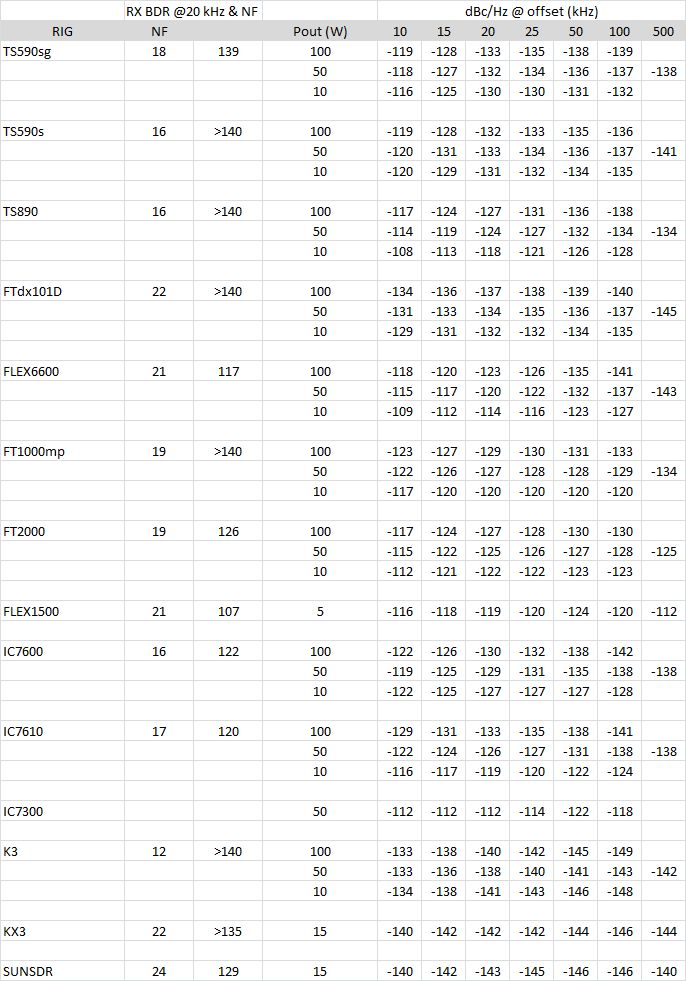
A note on SunSDR result - its TX chain is designed on AD9957 DUC and
gives super low TX noise, but the SFDR is not that great. There are few
birdies up to 25dB above the noise level as seen on the plot below. KX3
has even worse SFDR with more birdies.
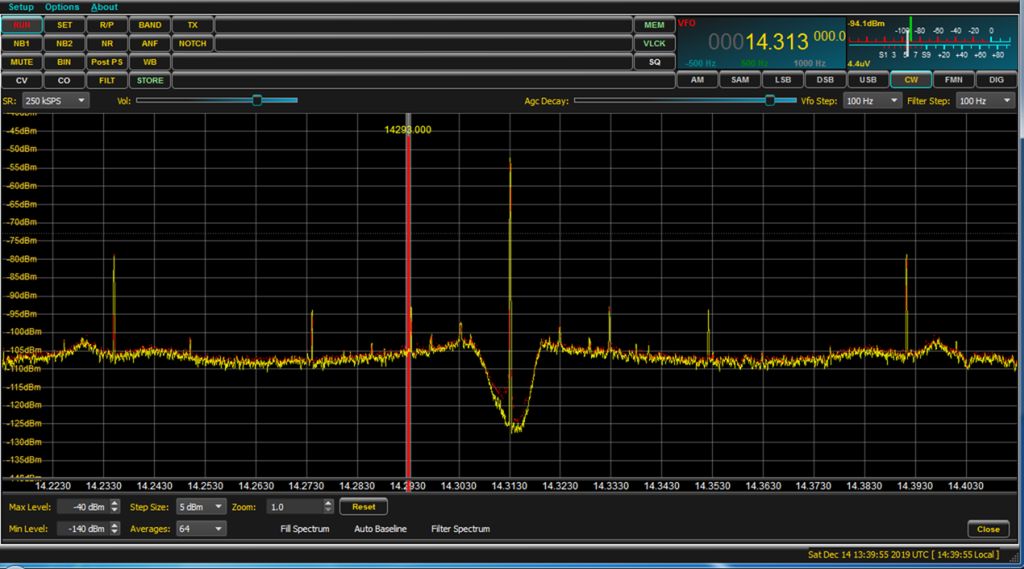
5.2 Keying clicks
Keying clicks results for the same 5 radios used to compare TX noise.
The modified FT1000mp is still very poor as compared to more recent
companions.
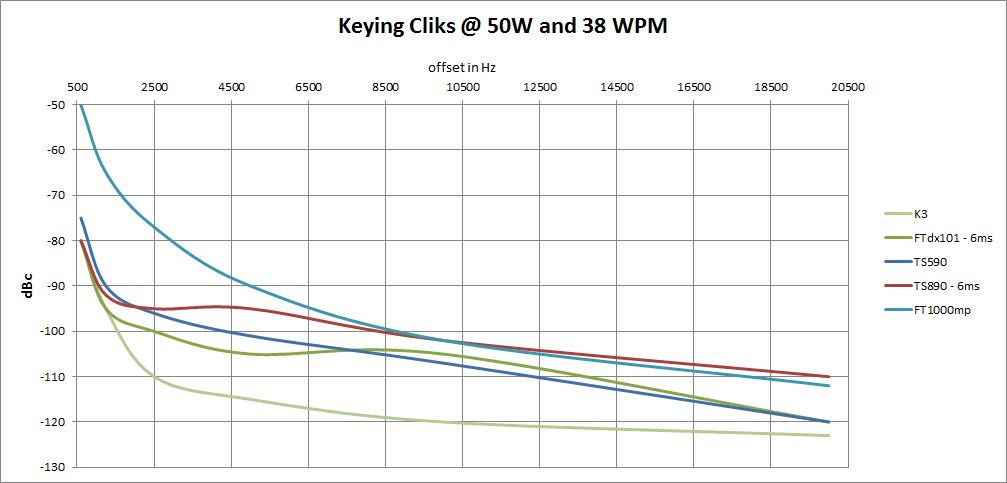
And for full set of tested radios:
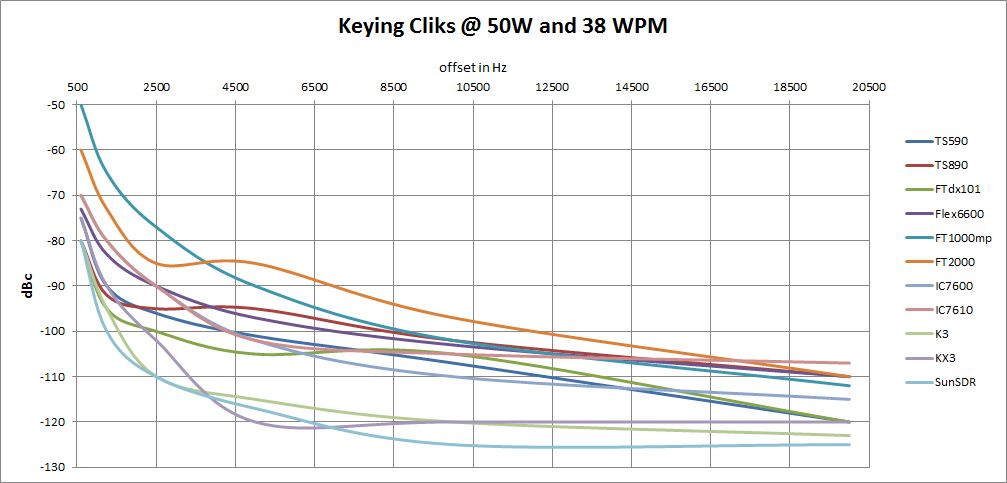
Spectrum (max hold)vbelow shows keying clicks of FTDX101d for two raise
time configurations - 4ms (yellow) and 1ms (red) @1,5 kHz/div:
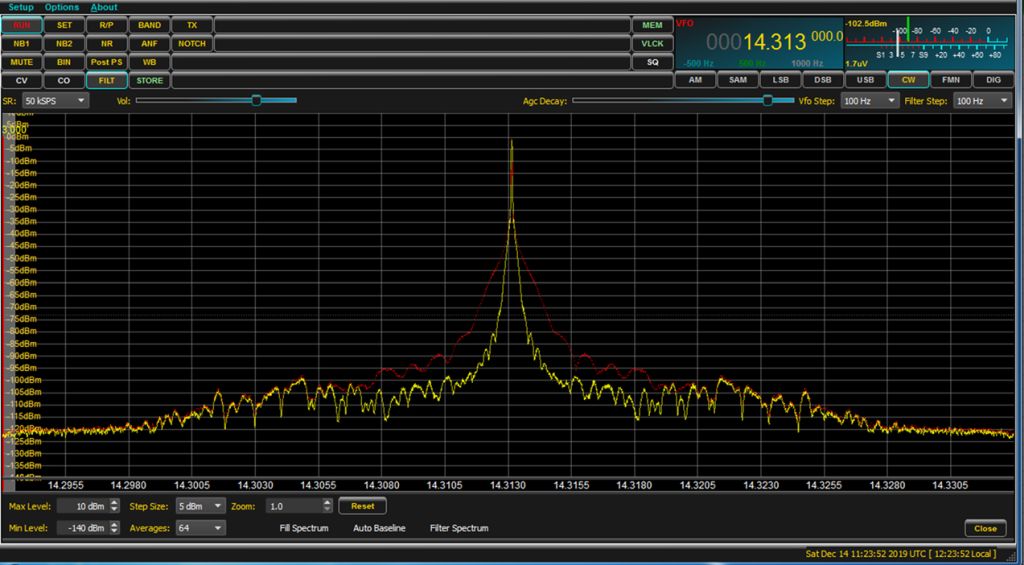
And the table:
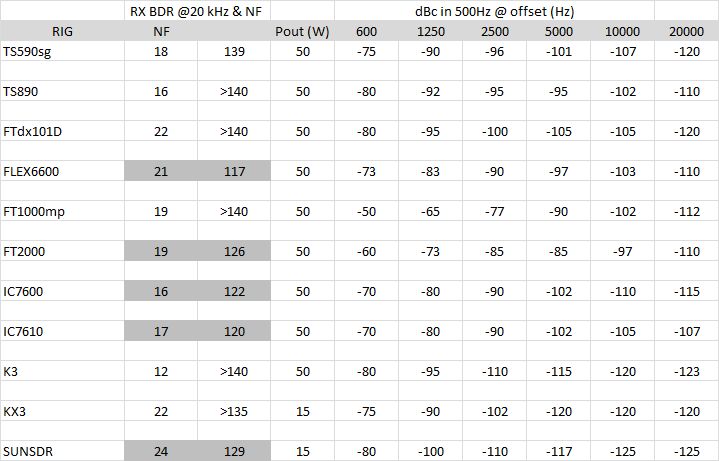
5.3 SSB splatter
The last test was the level of SSB splatter. Pink noise generator was used with 6:1 PAPR setting (Test Tone Generator).
One can see that all radios are very close at 2...7kHz offsets as TX
IMD reviews mostly focus on IMD3, IMD5 and IMD7 levels, therefore
radios are tuned to give good low level IMD products. But more far away
from the carrier up to 20dB difference in generated splatter levels can
be seen (high order IMDs). As an example, a TS890 with 59+40dB on your
receiver will generate SSB splatters of around S4 at 20 kHz offset,
while FTDX101 would be 20dB lower (below S0). Huge difference!
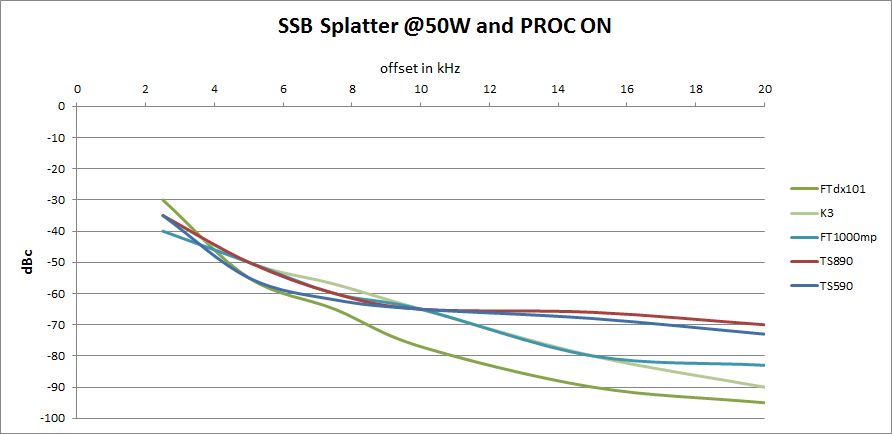
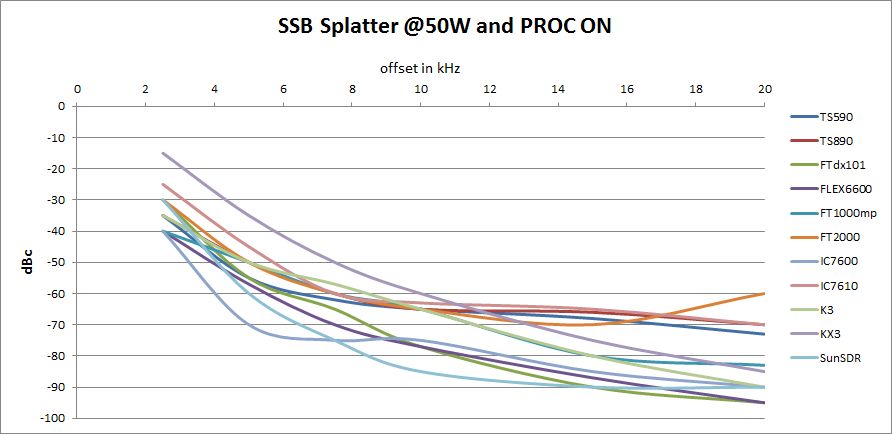
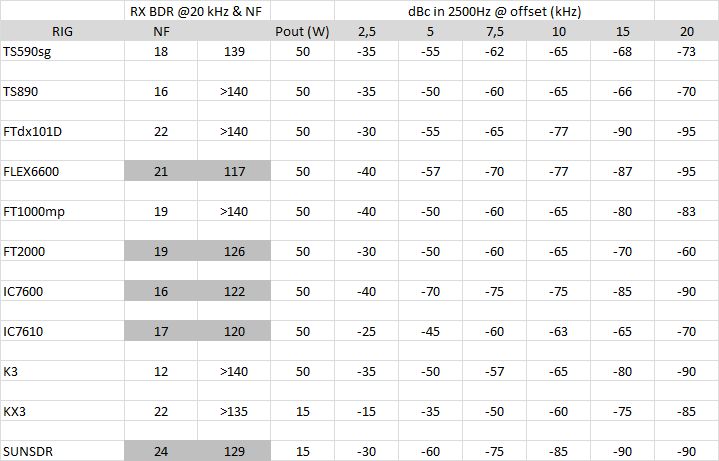
Three examples of FTDX101d SSB TX max hold spectrum for various settings of PROC and AMC:
- PROC on (yellow) @PROC GAIN 50, PROC off (red) @MIC GAIN 50
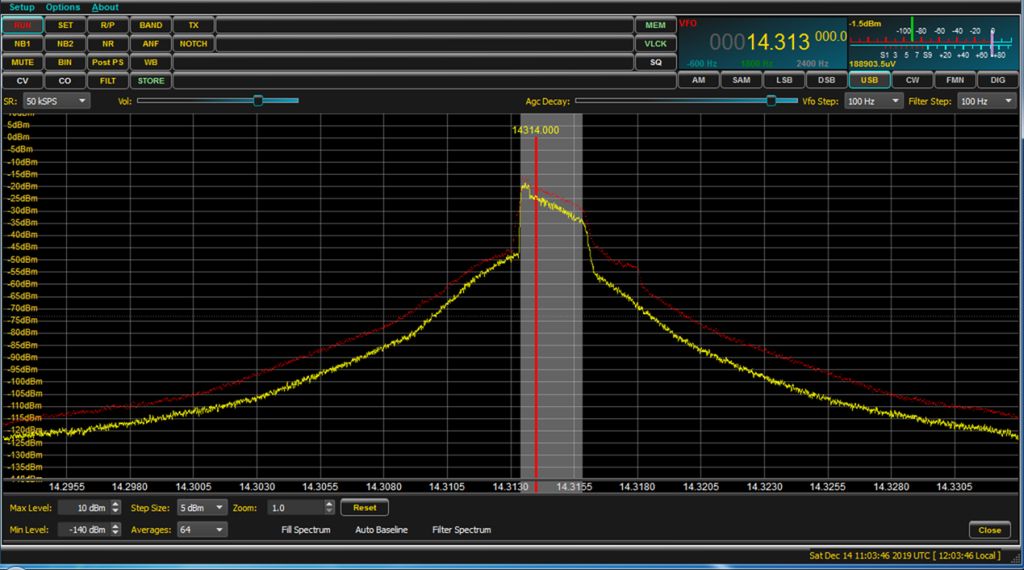
- PROC on: AMC OUT 50 (yellow), AMC OUT 100 (red)
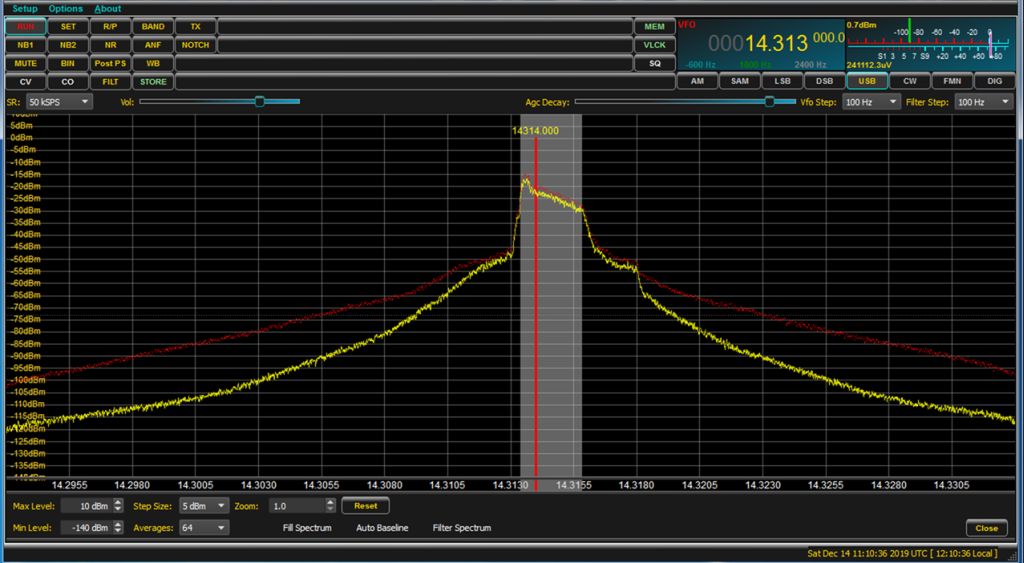
- PROC on: PROC GAIN 50 (yellow), PROC GAIN 100 (red)
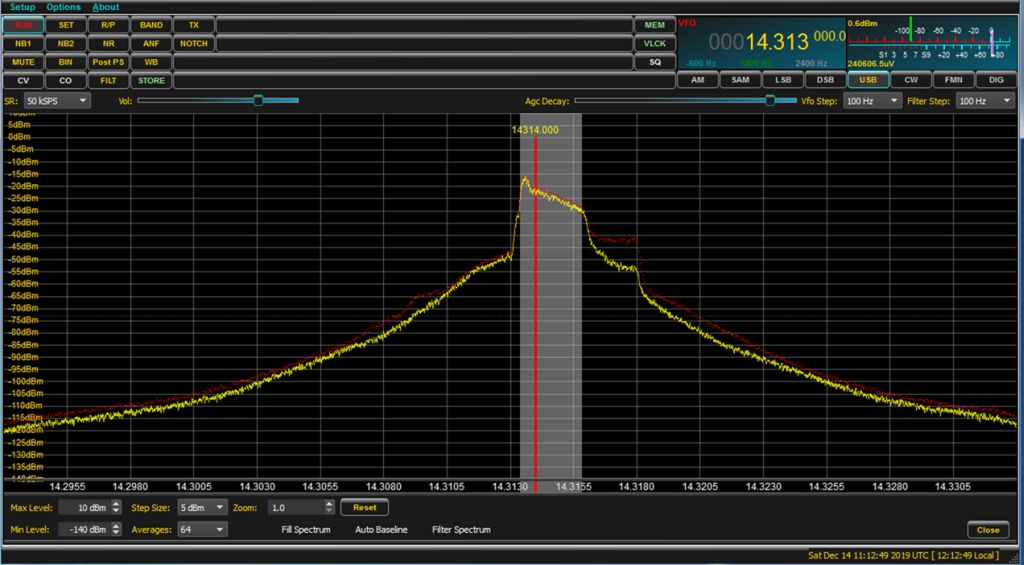
6. Conclusion
The
test campaign was really succesful - cool social gathering in pre-Covid
era, fine wine and beer, few plays of billiard afterwards, and yes, we
learned some new stuff and refreshed what we already knew.
It is surprising to me that after so many fine articles on the
importance of the low TX noise and distortion levels, even in 2020 the best radios
from the "big three" suppliers still lag big time behing K3, not to mention K3S.
Nevertheless, never buy a radio by consulting ranking tables - first
decide what your needs are and then go for best price-performance radio
shopping.
_____________________________________________________________________________
Date published: Jan. 2021
Change Log:
18.01. 2021 (added SunSDR note and comment on test metric)
21.01. 2021 (minor additions and more text on SSB splatter results)




















